Ravenna is a small, historic town in the Italian region of Emilia-Romagna. Located close to the Adriatic Sea, the town can trace its history back more than 2,000 years. Ravenna enjoyed a prosperous period during Roman rule in the 1st century A.D. before being occupied by a succession of other powers including the Ostrogoths and the Byzantines. Each ruler left his mark in the town, much of which can still be seen till this day – that explains the fact that despite its small size, Ravenna boasts no less than eight(!) UNESCO World Heritage properties. Despite these significant attractions, Ravenna is far from over-run by tourists, allowing visitors to enjoy its historic wonders at a leisurely pace. In addition, a large part of Ravenna’s centre is a pedestrian zone – the only thing you’ll have to look out for when you’re strolling around are bicycles! Here are things to see in Ravenna, especially the famous Ravenna mosaics, along with some culinary delights!
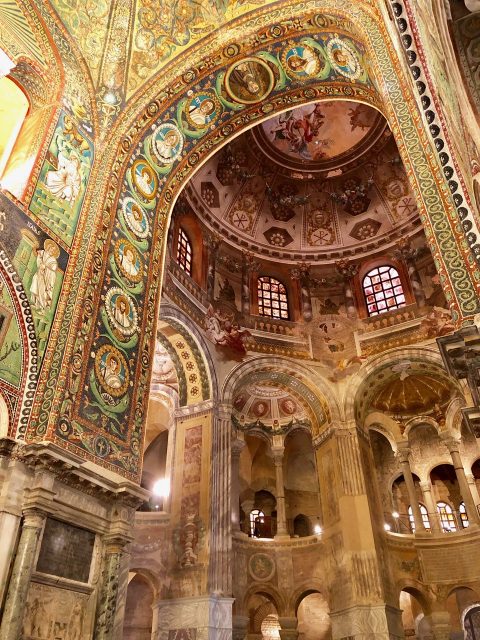
Things to see in Ravenna
I was attracted to Ravenna after reading up about its UNESCO sites and stunning mosaics but during my stay there, I discovered other great reasons that warrant a stay of at least a few days. The Ravenna mosaics can be covered in a day or two as most of them are within walking distance of one another. The ticket office near the Basilica di San Vitale sells single tickets that cover entrance to five of the eight sites, or you can purchase this ticket online. Follow the walking route in the map below to see many of Ravenna’s top attractions:
Basilica di San Vitale
A great place to start is the 1st century Basilica di San Vitale, one of the most treasured examples of early Christian and Byzantine art in Western Europe, and a must-see in Ravenna. The basilica, with its towering columns and rich, vividly-coloured mosaics, is absolutely awe-inspiring.
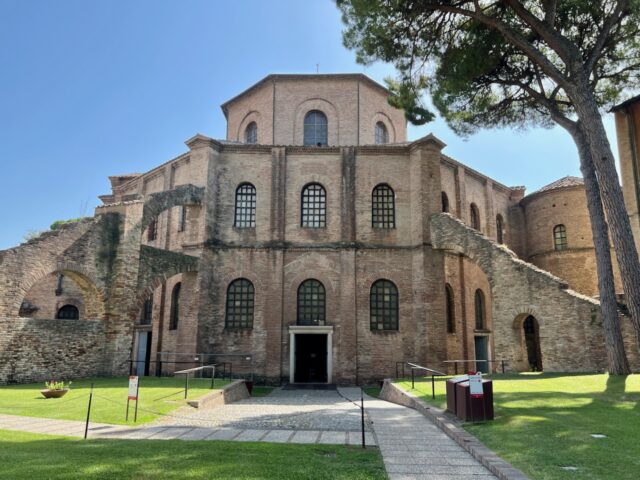
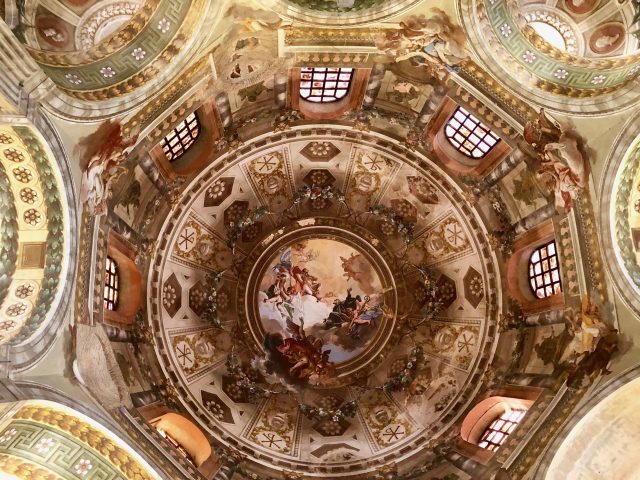
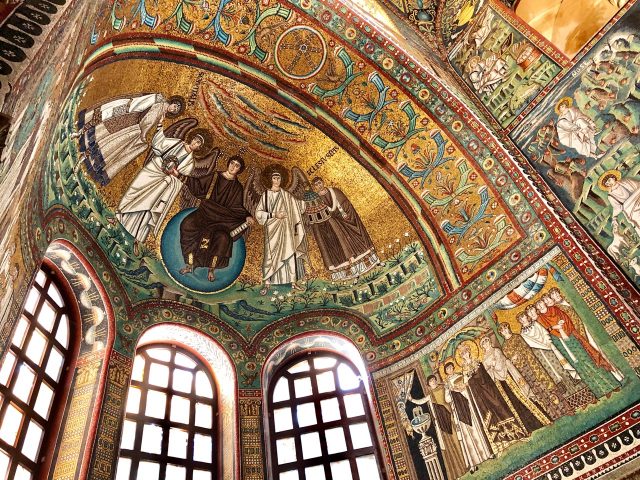
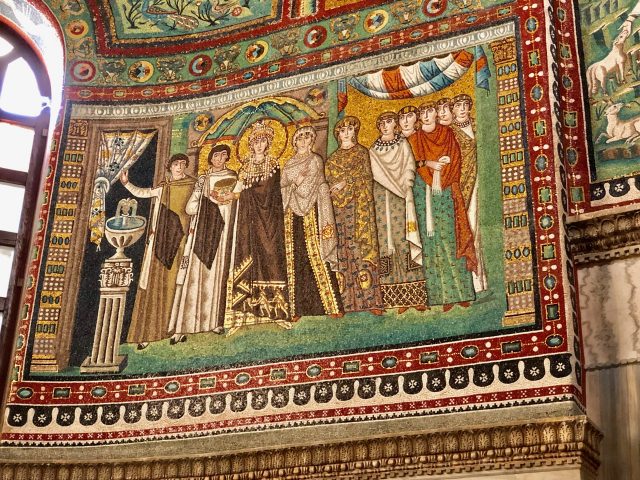
Mausoleo di Galla Placidia
Right next to the basilica is another UNESCO site, the Mausoleo di Galla Placidia. UNESCO describes this mausoleum as one of the best-preserved mosaic monuments, and rightfully so.
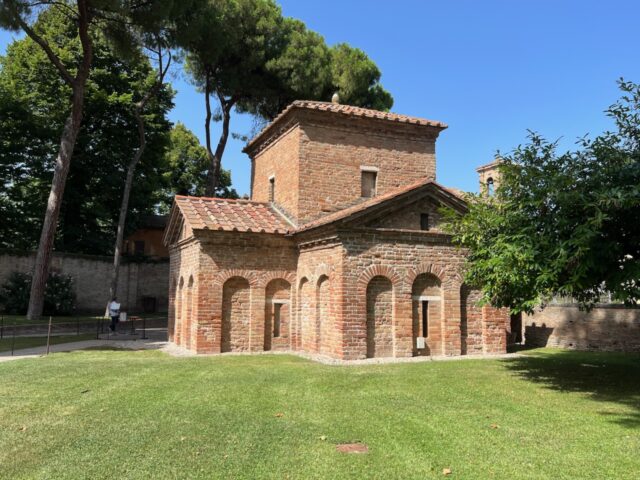
The intricate mosaics, stunning depictions and striking colours are jaw-dropping beautiful. Cole Porter reputedly composed his famous song, ‘Night & Day’ after a visit here in the 1920’s. I can imagine why. As you enter, you’re greeted by a rich blue ceiling with glittering gold stars. It’s incredible, once you think about it, how much effort was made to create these masterpieces using tiny, coloured tiles!
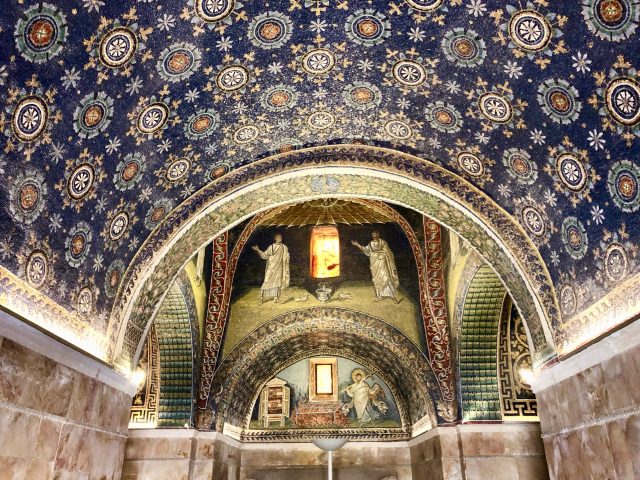
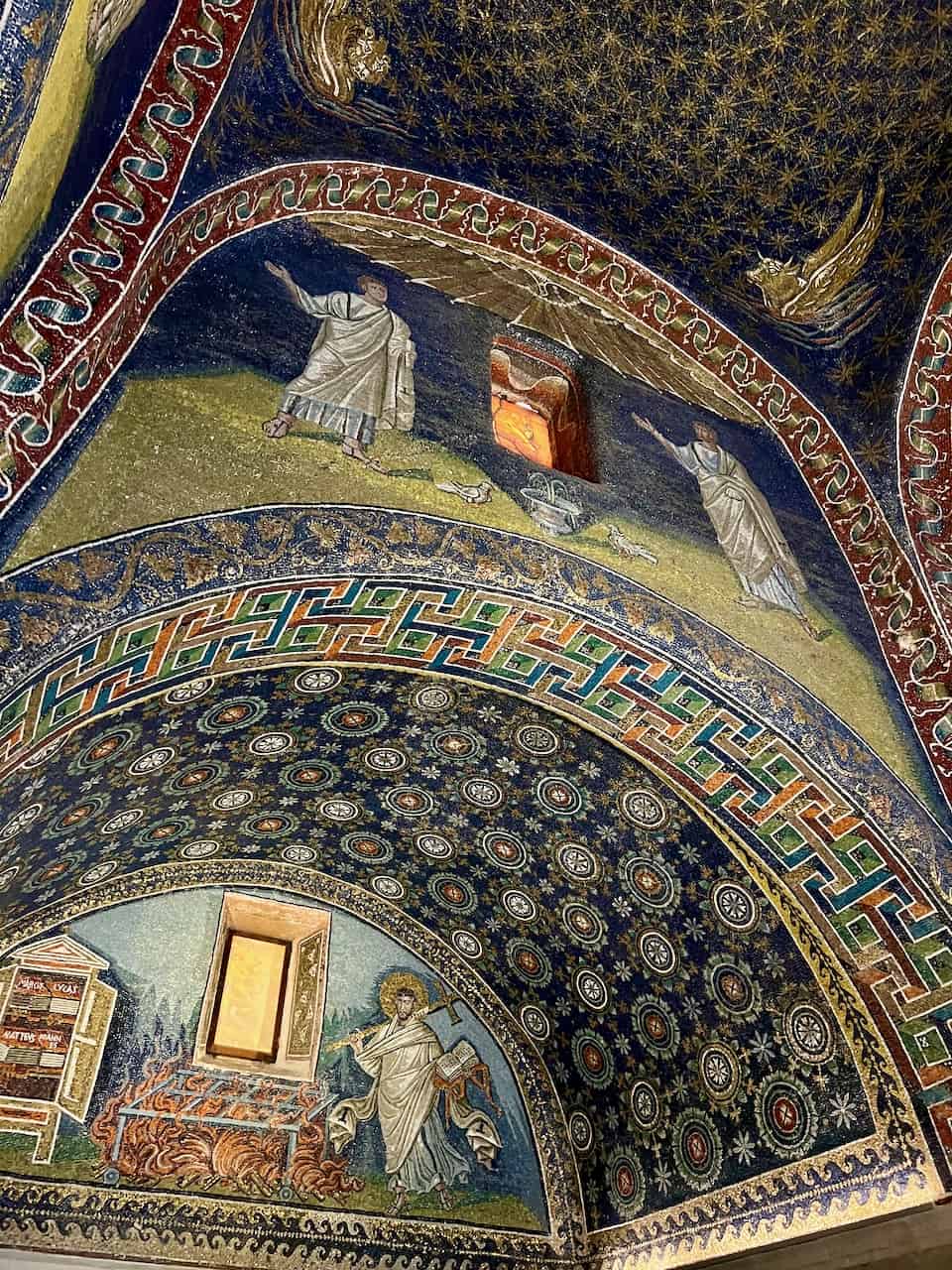
If you have time, visit the National Museum of Ravenna that’s adjacent to Basilica di San Vitale. The museum houses a varied collection of art and archeological finds in a beautiful monastery.
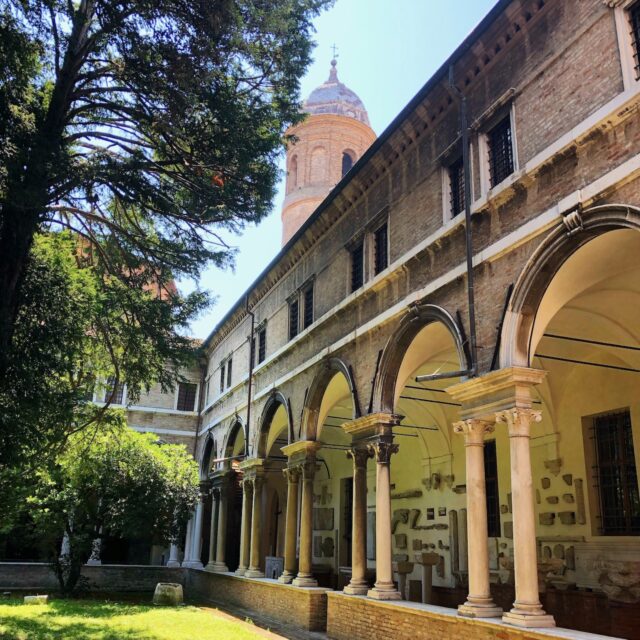
Other UNESCO World Heritage monuments in Ravenna
The other UNESCO sites in Ravenna I visited included the impressive Battistero Neoniano (Baptistry of Neon), the little but no less impressive Capella di San Andrea (St. Andrew’s Chapel), both of which are adjacent to Ravenna’s Duomo, the cavernous Basilica di Sant’Apollinare Nuovo, and the Arian Baptistry just off Via di Roma.
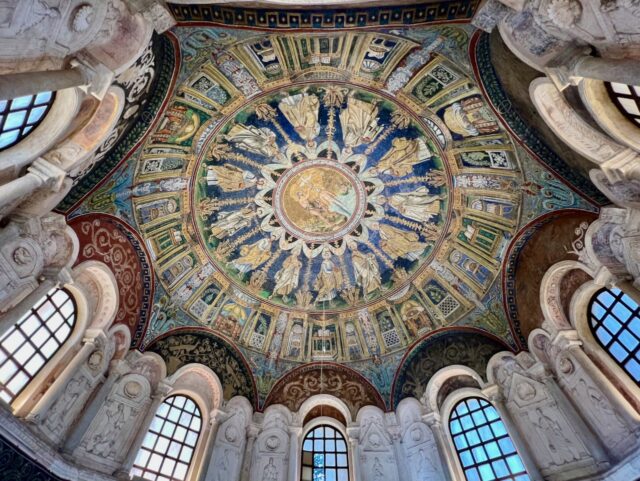
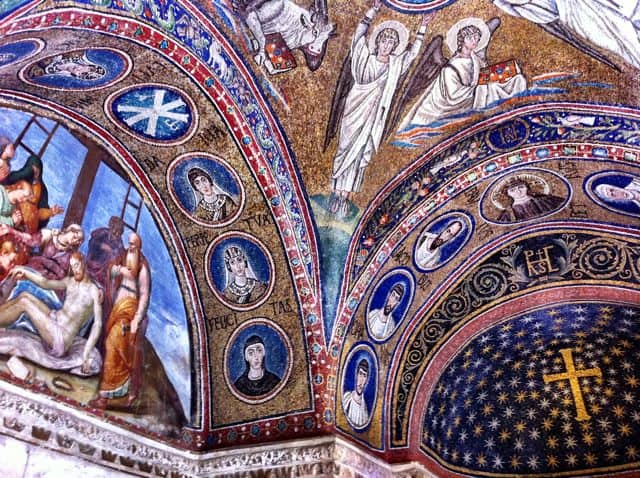
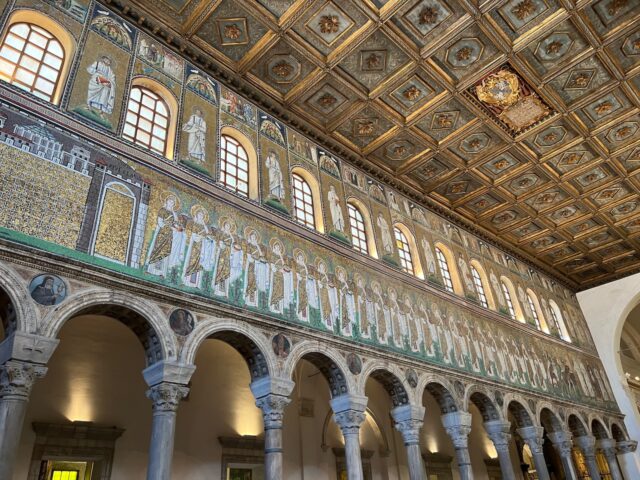
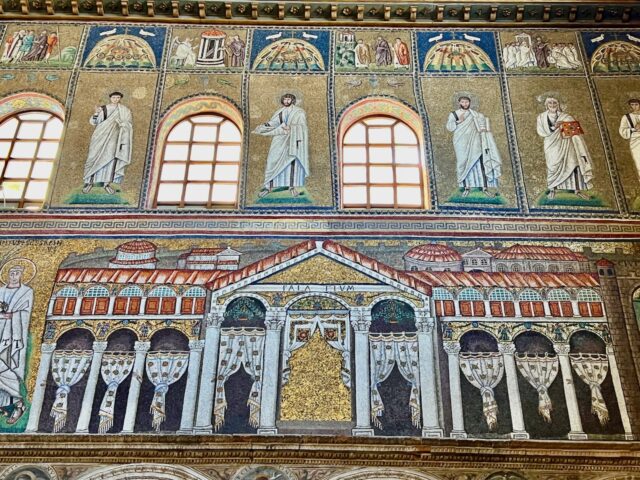
Just outside the city centre stands the 6th century Mausoleum of Theodoric, another of the 8 UNESCO World Heritage properties. Theodoric the Great was the Ostrogoth king who conquered Ravenna in 493 AD and made it the capital of the Ostrogothic Kingdom.
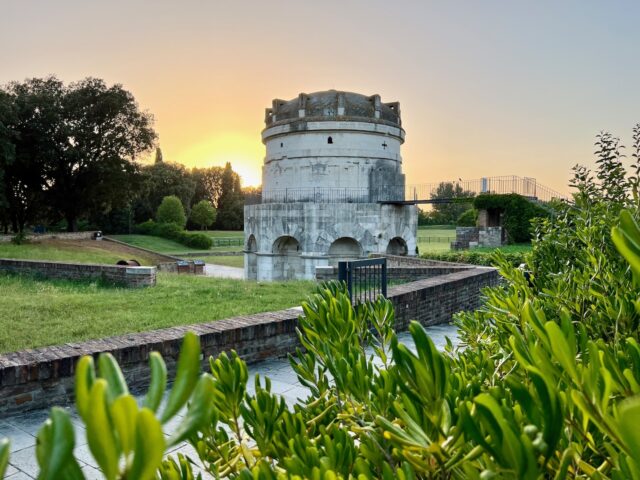
Domus of the Stone Carpets
In the early-1990’s, an important archelogical discovery was made not far from Basilica di San Vitale. During construction work of an underground parking garage, remains of a 6th century Byzantine palace were found. This Domus of the Stone Carpets is now open to the public and features elaborate mosaic floors.
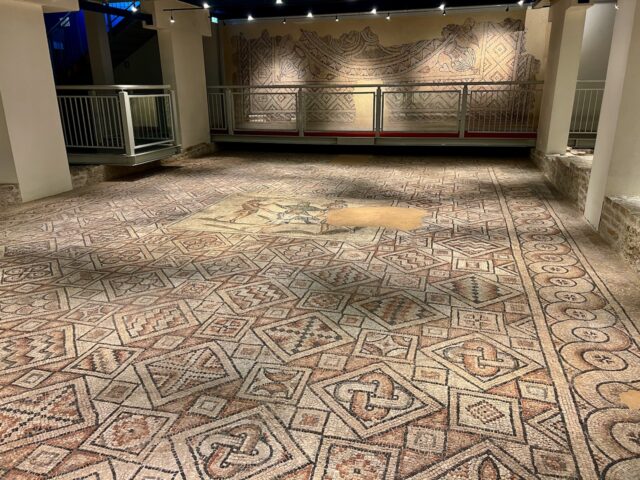
Exploring Ravenna
Ravenna itself is a lovely town with a web of charming streets filled with boutiques, cafés, shops selling regional produce, restaurants and gelaterias! The town’s central point and another Ravenna highlight is the picturesque Piazza del Popolo. From here, pedestrian-only streets fan out in different directions.
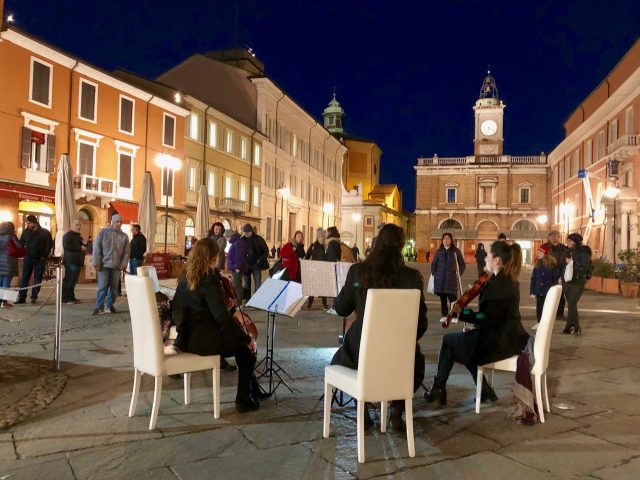
Around Via Cavour
Via Cavour is the main shopping street and extends from the historic Porta Adriana gate to the heart of the city at Via IV Novembre and Piazza del Popolo, where you’ll find a plethora of restaurants and cafés. In the maze of streets and lanes in this area, you’ll probably stumble upon Fresca, a lively wine bar that’s popular with the locals.
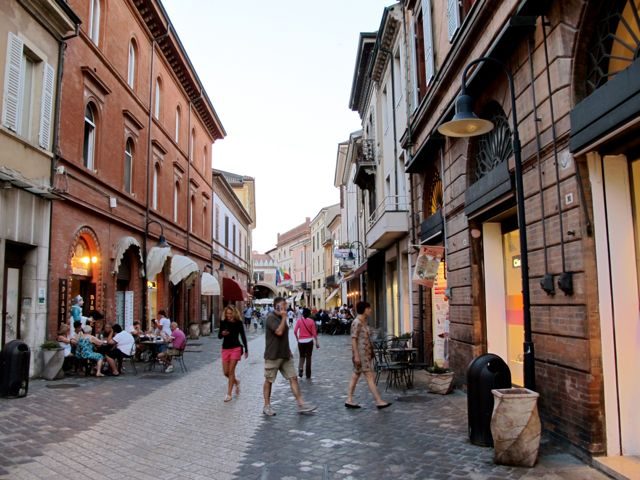
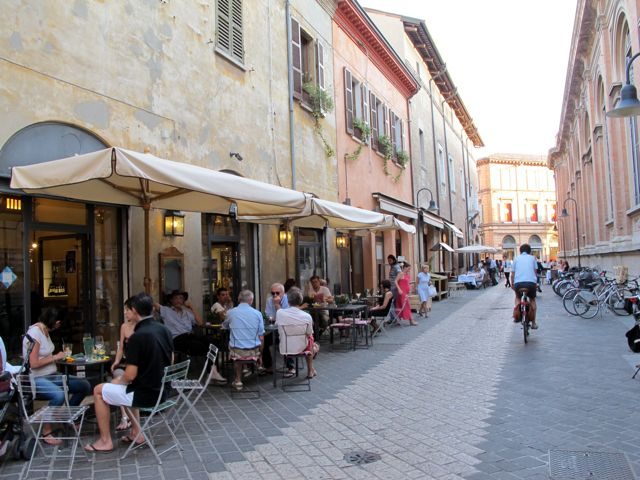
In Via IV Novembre, you’ll also find Mercato Coperto, a modern market with cafés and food counters. This is a great place for a lunch stop.
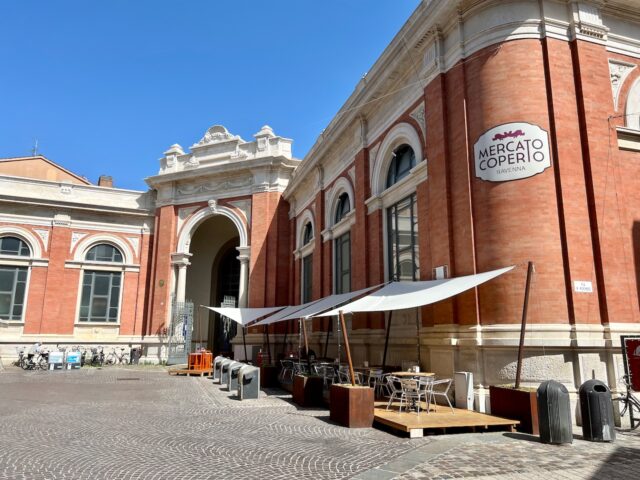

One thing to look out for in this area is Dante’s face (in Via Giuseppe Pasolini), a street art piece by Brazilian artist, Kobra.
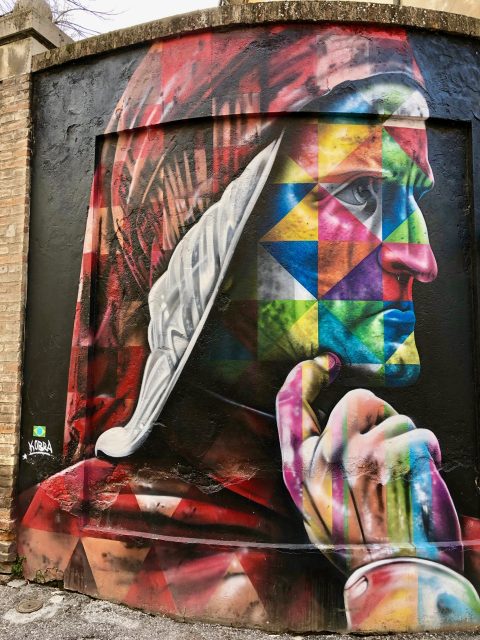
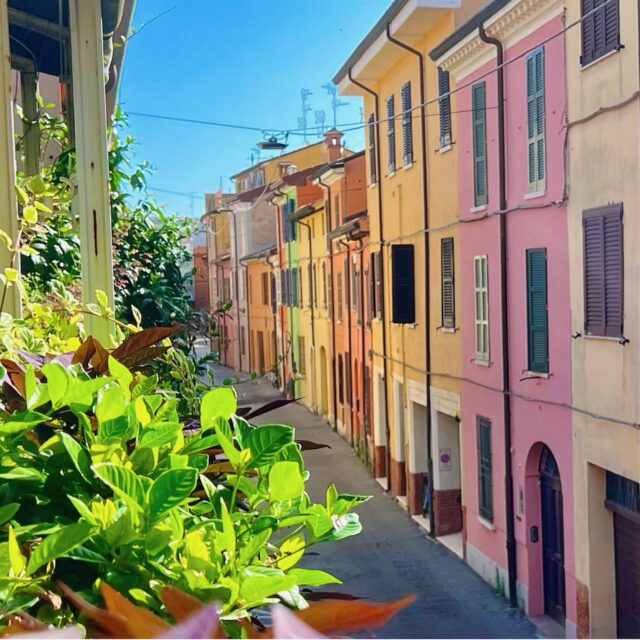
I also discovered two fabulous restaurants in Via IV Novembre called Bella Venezia (reservations recommended) and Capello. After dinner at Bella Venezia one evening, I made another awesome discovery: Papilla, one of the best gelaterias in Ravenna (very close to Bella Venezia). There’s a chocolate tap near the entrance which made my mouth water the second I saw it! I chose two flavours (chocolate and mango) and had the cone filled up with more chocolate. The result: an experience I won’t easily forget!
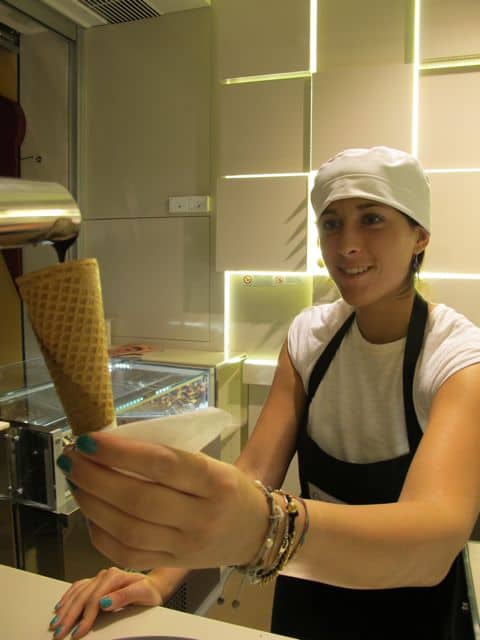
Around Via Corrado Ricci
Dante’s Tomb
Starting from Piazza del Popolo, a walk along the atmospheric Via Corrado Ricci will bring you past another famous Ravenna monument: Dante Alighieri‘s Tomb. Prior to visiting Ravenna, I had no idea that Dante, one of the most influential literary figures from the Middle Ages, was buried here.
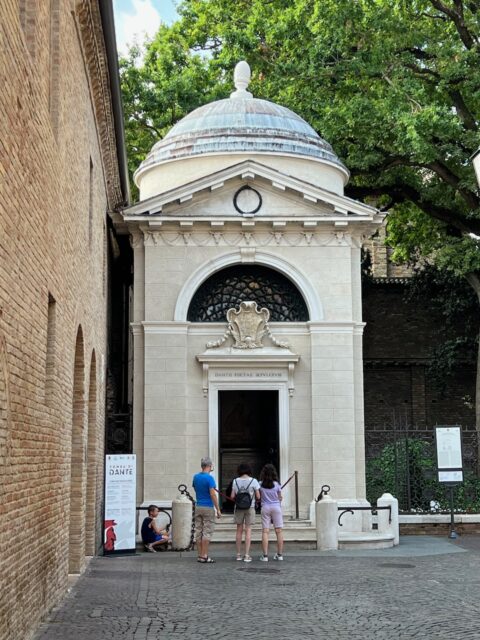
In the park adjacent to the tomb, look for a white stone slab. This marks the spot where Dante’s remains were hidden from the Florentines by locals who were adamant about keeping Dante in Ravenna.
Basilica di San Francesco
Then step inside the 5th century Basilica di San Francesco just behind Dante’s tomb. This church was rebuilt and restored several times, particularly in the 13th and 19th centuries to address the fact that it was sinking into the marshy ground on which it was built. Standing at the main altar, you can easily see the different floor levels and column heights.
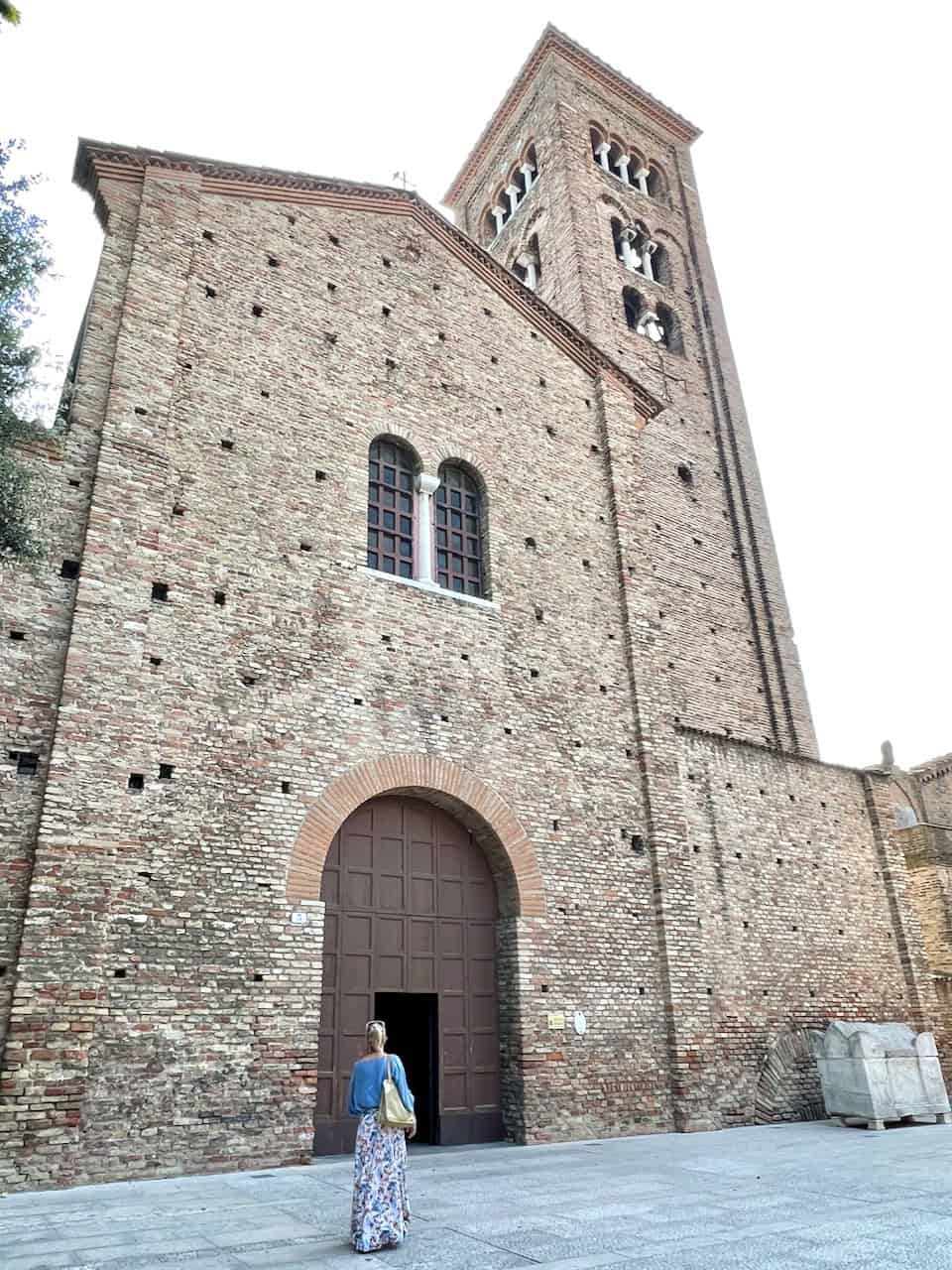
Under the altar, look for a sunken chapel dating from the 10th century. The flooded chapel has a beautiful mosaic floor.
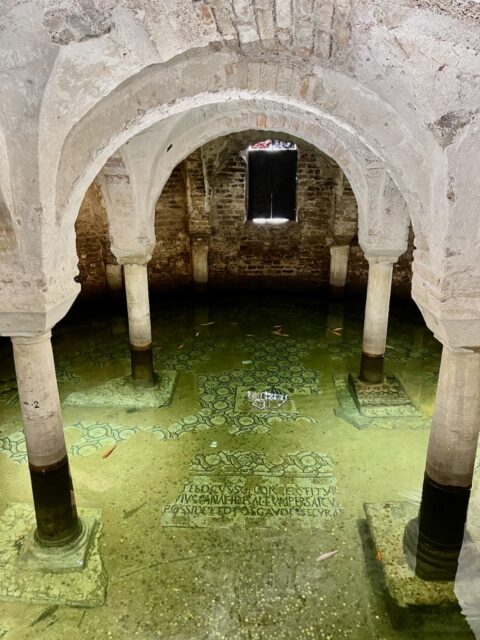
Read more about the Art Cities of Emilia Romagna
In the evenings, you’ll find people crowding around Ca de Ven (Via Corrado Ricci, 24), a bar/restaurant which truly is an institution in Ravenna. I highly recommend dining in Ca de Ven, which is famous for its top-notch Romagna cuisine.
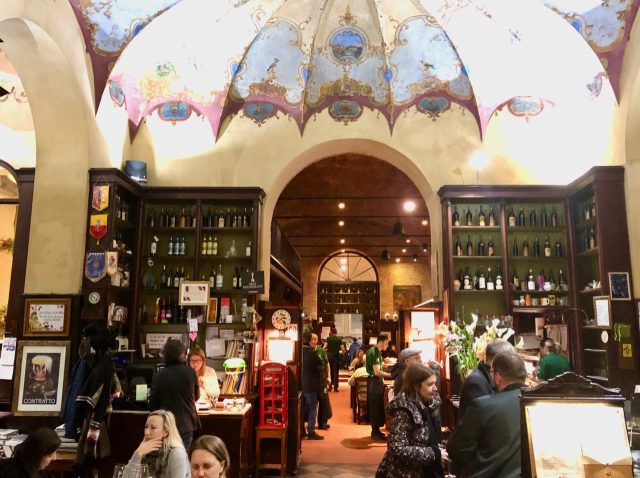
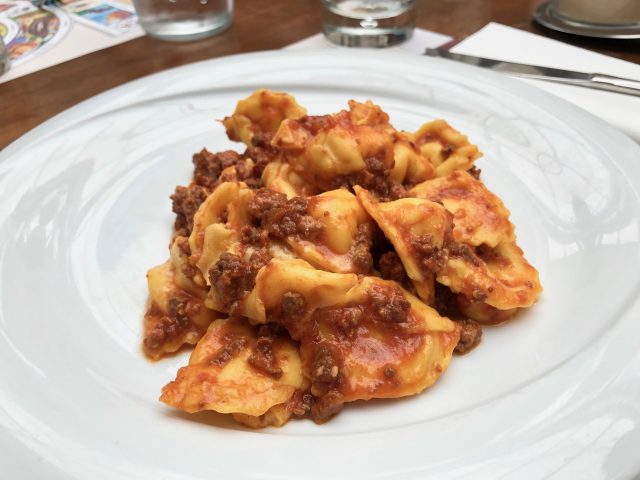
Around Via di Roma
Another wonderful road to explore is Via di Roma. Starting at the Arian Baptistry (one of the 8 UNESCO properties), walk to Via di Roma and continue towards Porta Nuova (gate). Look out for Koko Mosaico (Via di Roma, 136), a gallery and workshop where beautiful modern mosaics are created. You can also sign up for a mosaic workshop there.
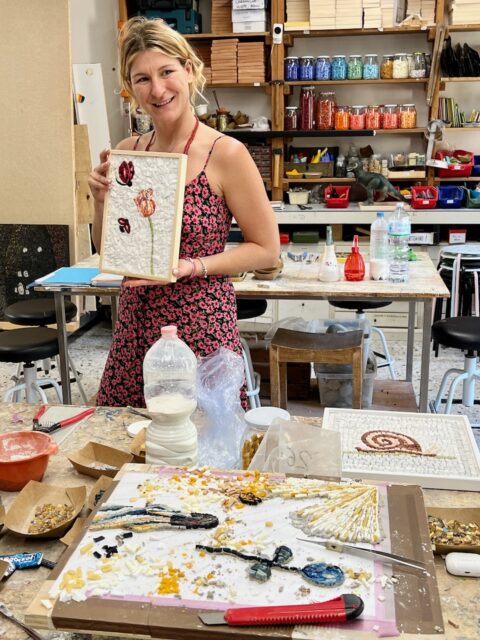
Basilica di Sant’Apollinare Nuovo
Further along Via di Roma, you’ll find other top attraction in Ravenna: the majestic Basilica S. Apollinare Nuovo with its astonishing mosaics (see UNESCO sites above).
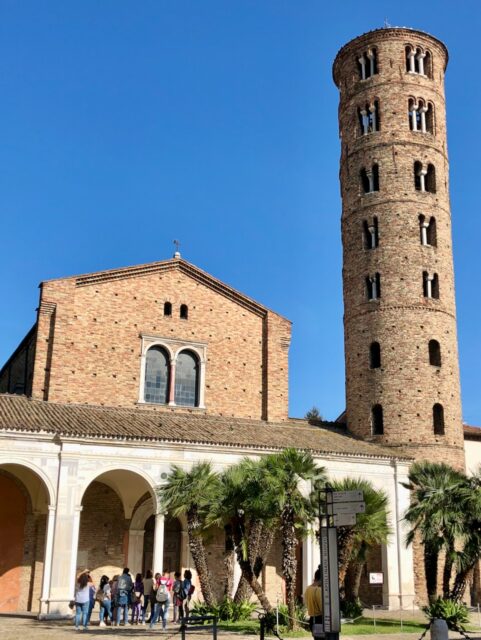
Museo Arte della Citta
A bit further, you’ll arrive at the beautiful Parocchia S. Maria in Porto. Adjacent to it is the Museo Arte della Citta (City Art Gallery) or MAR. I recommend visiting this museum, with its beautiful contemporary mosaics, a collection of ancient artworks, paintings and sculptures from 14th to 19th century, including the outstanding statue of Guidarello Guidarelli by Tullio Lombardi (1525).
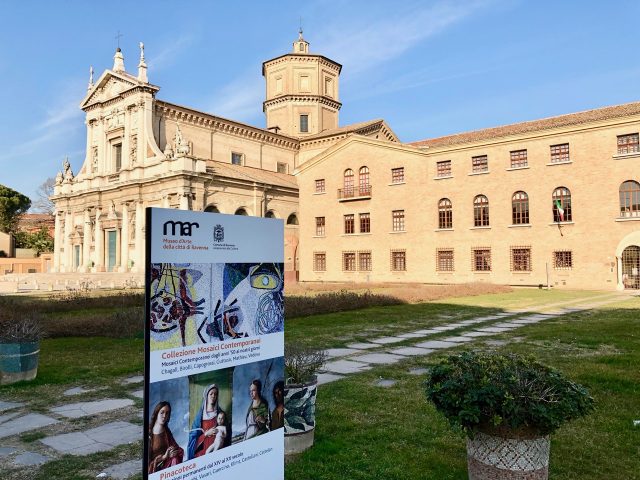
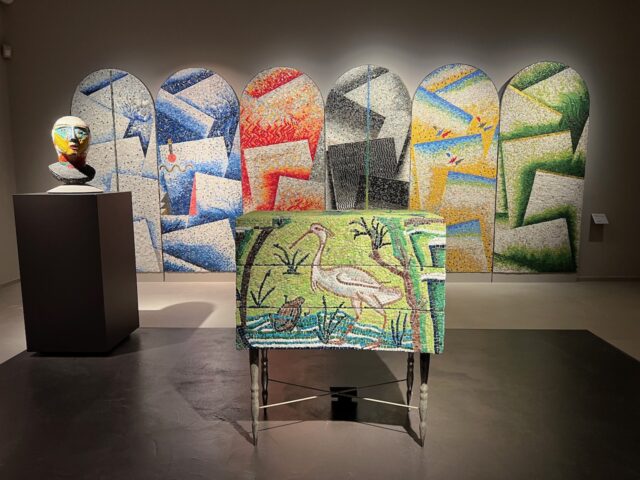
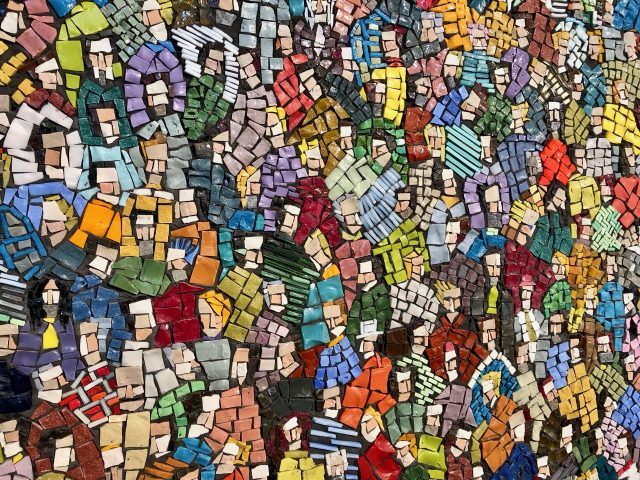
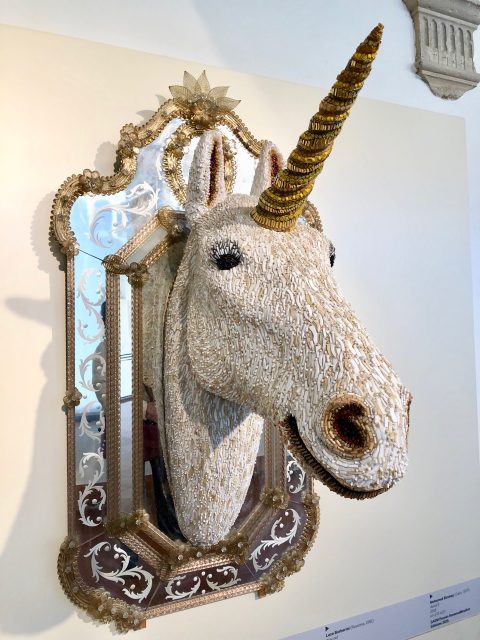
Down the road from Porta Nuova, you’ll find Ristorante Alexander (Via Bassa del Pignataro, 8), a cosy restaurant housed in an old cinema. The chef serves superb Italian cuisine blended with contemporary influences.
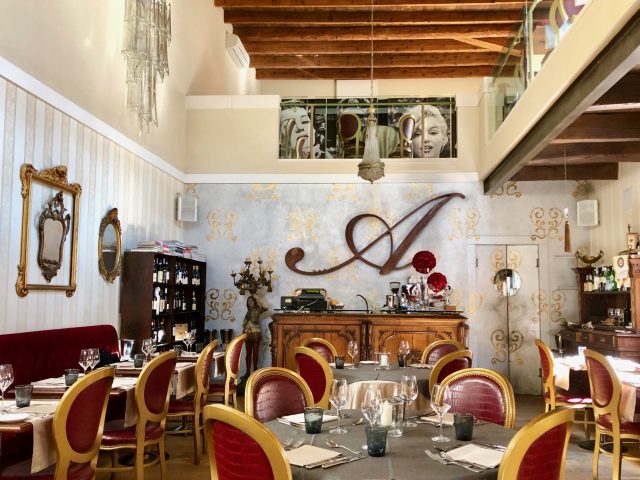
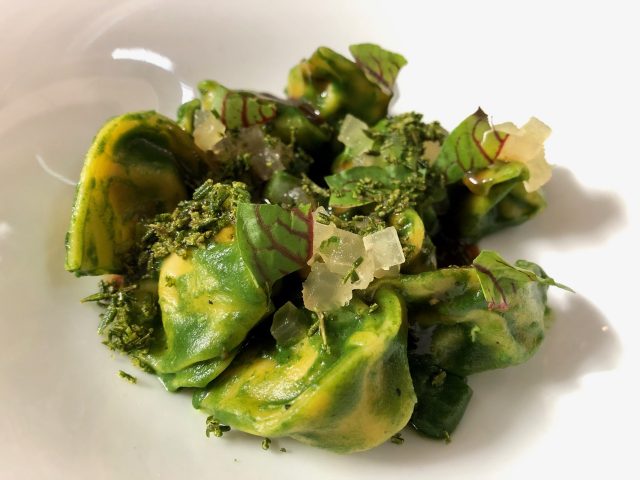
Other restaurants in Ravenna I can recommend include Osteria dei Battibecchi (local food in a cosy, homely ambiance; Via della Tesoreria Vecchia, 16), Osteria Passatelli (Romagna cuisine in an old cinema with a large outdoor terrace; Via Ponte Marino, 19) and Antica Trattoria Al Gallo 1909 (terrific food in stylish, classical surroundings; Via Maggiore, 89).
Classe
Just outside Ravenna, in the village of Classe (about a 15-minute drive), you’ll find another UNESCO World Heritage property: Basilica di Sant’Apollinare. This 6th century church, with its 24 marble columns, is another important example of Byzantine art. A short stroll away (400 meters) lies the Classis Ravenna – Museo della Città e del Territorio, which tells the history of Ravenna through a stunning collection of archeological objects and mosaics. A single ticket provides entrance to both attractions.
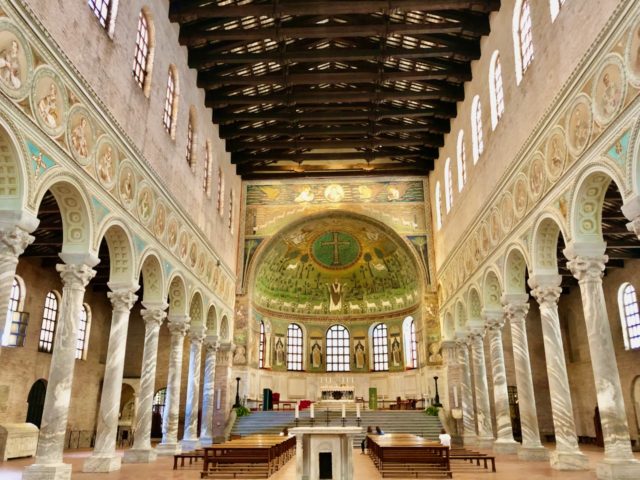
Ravenna beaches
Ravenna is situated about a 15-minute drive from the Adriatic coast. The coast boasts long, sandy beaches backed by pine trees. There are many beach clubs to go to but my favourites are located just south of Marina di Ravenna, such as Singita Miracle Beach and the adjacent Finisterre Beach. I spent one lovely afternoon enjoying the sea and sand. In the evening, I had a lovely seafood dinner with my feet in the sand. Bliss!
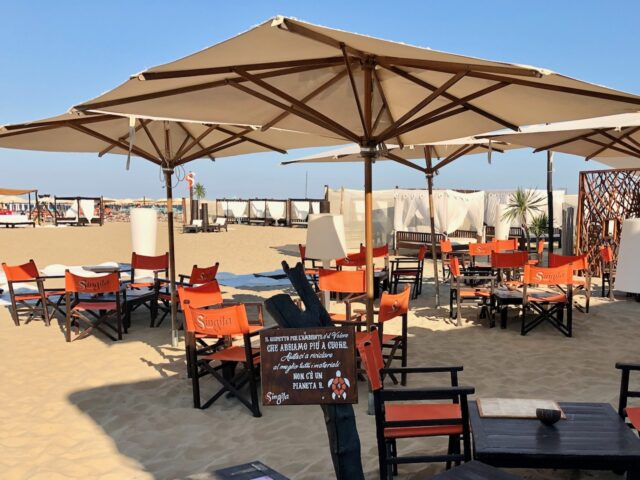
Where to stay in Ravenna
There are numerous hotels and B&Bs in the city centre within walking distance of Ravenna’s top attractions. Small hotels and B&B’s I can recommend include Chez Papa, Le Case Cavour, Villa Santa Maria Foris and Villa Noctis.
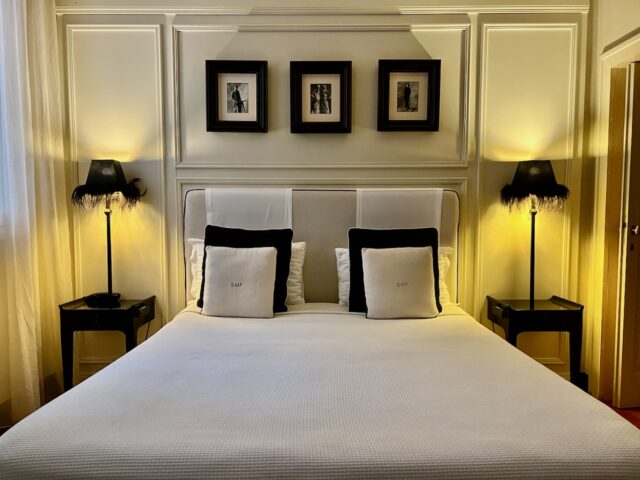
I’ve absolutely enjoyed my visits and marvelled at the many things to see in Ravenna. I love the laid-back vibe of the town whilst the UNESCO sites are truly awe-inspiring. Ravenna is easily accessible by train from Bologna and Rimini, about an hour from both. If you’re travelling through Italy and visiting Emilia-Romagna, don’t miss Ravenna! The city also makes for a great base from which to explore the Adriatic coast.
Read about other cities in Emilia-Romagna like Bologna or Modena. One of my favourite towns in Emilia-Romagna, Comacchio, is situated just north of Ravenna. Read about things to do in Comacchio.
Ravenna is also a recommended destination in the Ultimate Euro Food Trip.
Note: my visit to Ravenna was part of the Blogville project, a collaboration between the Emilia-Romagna Tourism Board and iambassador.

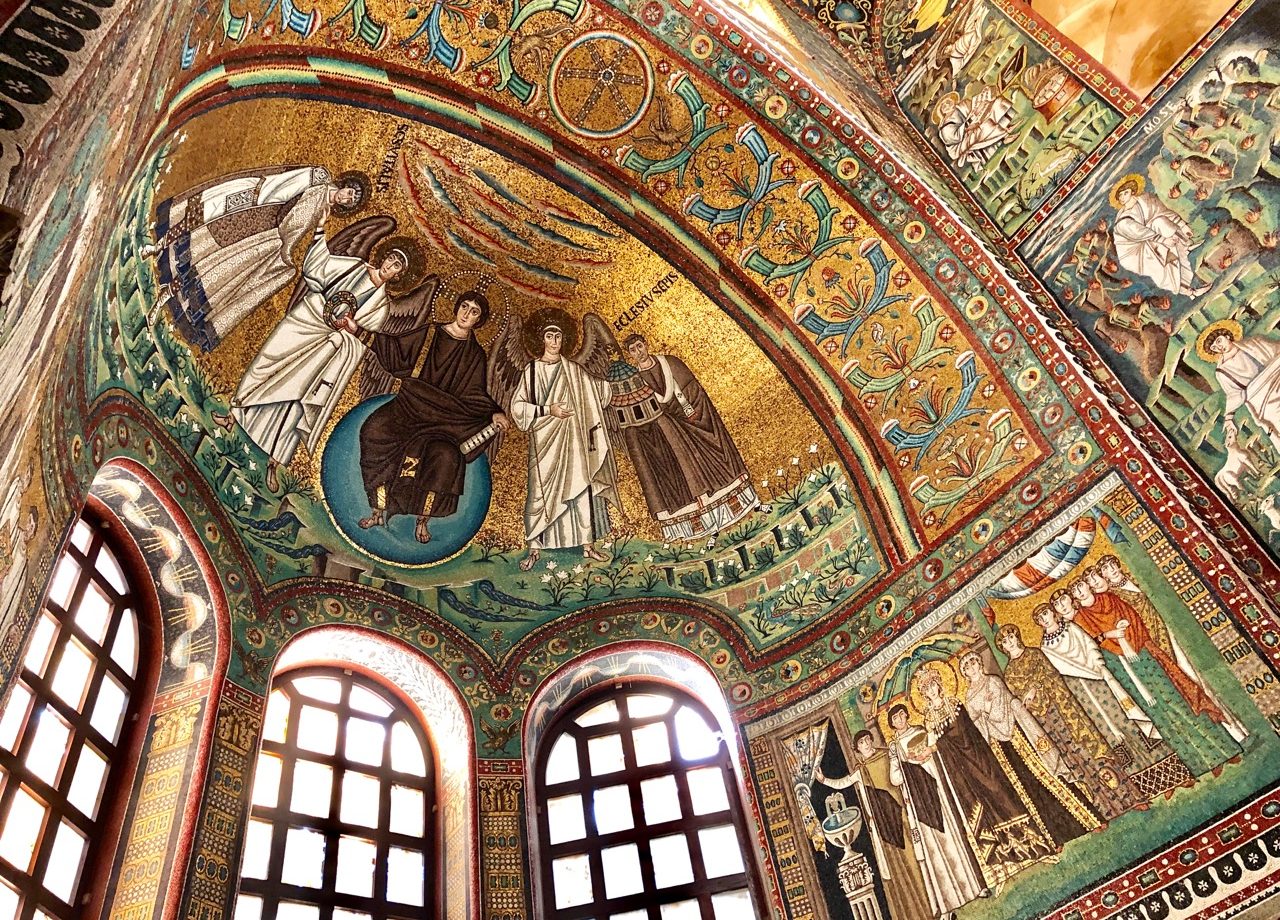

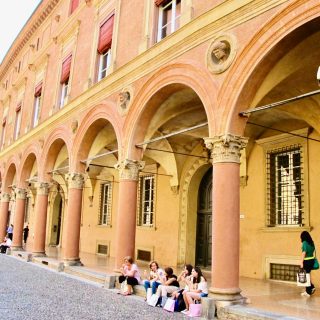
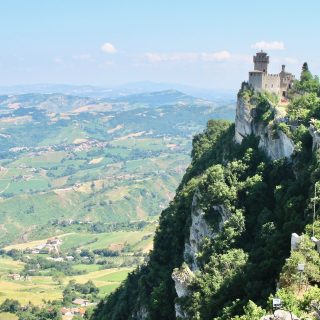

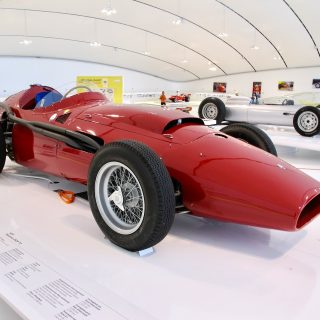






[…] Read about things to do in Ravenna. […]
[…] Read about things to see in Ravenna. […]
[…] in your itinerary. With its historic towns like Bologna, Modena, Reggio Emilia, Parma and Ravenna, its automotive attractions and culinary treats, this region is simply […]
[…] Ravenna turned out to be a true gem! I totally fell in love with this gorgeous town, most famous for its impressive mosaics. Read about things to see in Ravenna. […]
[…] Ravenna, a historic town near the Adriatic coast, boasts no less than 8 UNESCO World Heritage Sites! Don’t miss the awe-inspiring Basilica di San Vitale and the adjacent Mausoleo di Galla Placidia for its incredible mosaics! Read more about what to see in Ravenna. […]
[…] Head towards the Adriatic coast and stop at one of my favourite towns in Emilia Romagna: Ravenna. This ancient town is home to no less than eight UNESCO World Heritage sites! The main attractions are its churches, mausoleums and basilicas with their breathtaking mosaics but soak up the atmosphere by simply strolling around this gorgeous town. I recommend spending at least a night here to truly appreciate the town’s historic sights and wonderful atmosphere. Read about things to do in Ravenna. […]
its a historic city, those paintings on the walls look beautiful
[…] Ravenna turned out to be a true gem! I totally fell in love with this gorgeous town, most famous for its impressive mosaics. Read about my stay in Ravenna. […]
[…] Risalente al I secolo d.C., la Basilica di San Vitale di Ravenna è uno degli esempi più preziosi di arte paleocristiana e bizantina dell’Europa occidentale. La basilica, con le sue colonne imponenti e i ricchi mosaici dai colori vivaci, è assolutamente impressionante. – Keith Jenkins di Velvet Escape https://velvetescape.com/2013/07/ravenna-attractions/ […]
[…] The 1st century AD Basilica di San Vitale in Ravenna is one of the most treasured examples of early Christian and Byzantine art in Western Europe. The basilica, with its towering columns and rich, vividly-coloured mosaics, is absolutely awe-inspiring. — Keith Jenkins from Velvet Escape https://velvetescape.com/2013/07/ravenna-attractions/ […]
[…] and historic towns which shouldn’t be missed. Towns that should be high on your list include Ravenna, with its UNESCO Heritage mosaics, and Modena, home of the world famous balsamico and motor brands […]
I agree about Ravenna having a lot to offer. I went last year and loved all of the history and mosaics!
Ravenna looks like a charming Italian town – worthy of plonking one’s self down at one of those little cafes, ordering a cappuccino (maybe chased by a gelato!) and doing some fun people watching…
Great Shots. Enjoyed the 360. And the chocolate, mmm chocolate…you bastard! Now I’m craving ice cream…
again, such lovely colors…
Thanks for featuring my Ravenna post in your web wrap! It sure is a gorgeous town and the mosaics are mind-blowing!
Cheers,
Keith
What a great insight into this hidden gem! We’ve included it in our latest web wrap: http://www.frugalmonkey.com/travel-news/frugal-monkeys-web-wrap-31-july-2013.html
[…] The Wonders of Ravenna @ Velvet Escape – Before we read this article, the tiny Italian town of Ravenna wasn’t even on our radar. After seeing pictures of its stunning mosaics and delicious food, we’re desperate to witness it for ourselves. This article gives a fascinating insight into this largely unknown gem. […]
Have not gone to Ravenna but definitely is on top of my list in the future. Inricate, stunning mosaics I must say.. to think of all the work, dedication, and vision into that is quite remarkable. Thanks for sharing! Cheers.
This looks amazingly beautiful and we will definitely keep it in mind for our next visit to Italy. The images of the mosaics are stunning! Thank you for sharing this information and wonderful images as well.
I have not been to Ravenna but it does seem very interesting place to visit. You can’t beat that ice cream.
Hi Lesley,
Thanks for your lovely comment. I can definitely relate to your experience. It was hard to tear myself away from the majesty of the basilica. I’ll never forget the moment I entered. My jaw dropped and I manage a soft “OMG!”. It was incredible.
Cheers,
Keith
The mosaics of San Vitale were one of life’s pivot points for me. I couldn’t tear myself away and felt changed afterwards. If you love Italy or mosaics, Ravenna is not just worth the trip but essential. Probably the finest thing I’ve seen in my life.
Hi Melissa,
You definitely have to return to see those mosaics!
Cheers,
Keith
I almost visited Ravenna when I was in Bologna this year, but I ended up taking a food tour in Modena instead. I’ll have to visit this region again and take in all those mosaics in person.